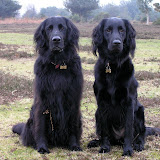 Today we had a beautiful walk around Arne in Dorset.
Today we had a beautiful walk around Arne in Dorset.We were lucky enough to hear the Sika Stags whistling and we had so many views of these beautiful deer. At times they were so close. it was just magical!
Sika deer are native to islands of Japan and Taiwan and were first introduced into deer parks and private collections in the UK in 1860, from where they subsequently escaped or were released. The colour of their coat varies but it is generally chestnut brown and spotted in summer and almost pure grey in winter. They have a characteristic white patch of fur, outlined in black, beneath their short white tail. Stags have relatively simple antlers which generally have four points on each antler. The antlers are cast each year in April or May.
Sika deer are mostly solitary and are most active at dusk. They seem sensitive to human disturbance and only venture into more open areas at night. Sika can cause damage to commercial forests when they gouge deep, vertical grooves into the trunks of mature trees, which they do to mark their territory.
Breeding:
They mate from late August to October and give birth to one young, 8 months later in May or June. The young become independent after 6–10 months.
Diet:
Mainly grasses, sedges and heather but also fungi and bark.
Deer tracks:
It can be difficult to distinguish between sika and other deer tracks. Their prints are generally 5–6cm long.
Habitat:
Sika deer prefer woodland with damp ground with dense undergrowth and heathland.
Predators & threats:
Many young do not survive their first winter because of exposure and starvation. Adults have no natural predators but are culled by man.
Status & distribution:
There are large populations of sika deer in Scotland and Ireland and more localised, patchy populations along the south coast of England, in Hampshire and Dorset as well as in the Lake District and Lancashire. No populations are thought to be established in Wales.
Sika deer are very vocal animals and during the mating season, males make a sharp whistling call, which can be heard up to 1km away!




2 comments:
Lots of interesting facts there that you found. I only ever thought there was one breed of deer in England - so there you go - you taught me something today :)
What a lovely close up you got. There's a herd of Sikka dear roam around beside Loch Morar. I've never been quite that close to them though.
Post a Comment